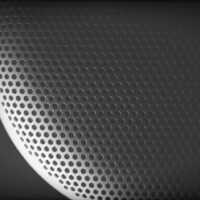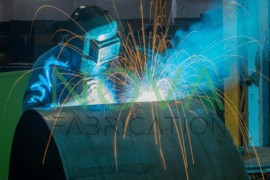Sheet metal design and fabrication is a topic I’ve aimed to cover for quite a while. So I thought I’d kick things off by highlighting one of the build projects by Ron Covell a master metal fabricator and teacher. His Youtube channel is packed full of tips and techniques for the aspiring fabricator. Additionally, if you hop over to his website Covell you will find a host of in-depth tutorials and hands-on workshop opportunities.
As for me, I get excited when I see stuff being crafted in sheet metal. I’m sure it has something to do with the hours and hours I spent shaping metal in an effort to bring classic cars back to life. Or, the combination of power and finesse I employed to true up autobody sheet metal that had gotten smashed up! Yep, back in the day, I’m
Introduction
One of Ron’s most popular YouTube videos has been Beading Machine Basics. In it, he builds an elaborate, highly detailed bomber seat. He pulls out all the stops in terms of the techniques employed and tools used. However, he admits that a number of his viewers were intimidated and shied away from attempting a bomber build.
Ron’s aim for the build shown in this video was to simplify the design and move the build into the realm of a DIY project. The design has been distilled down to a single sheet pattern that requires little to no welding. Additionally, the equipment required for the build, for the most part, are common tools found in fabrication shops, or that are available through suppliers such as Eastwood. Now that’s what I call ingenuity and user-centered design in action! Let’s have a look at Ron’s overall process in detail and see what we can learn. I personally gleaned a lot of design and fabrication nuggets that I know will help me when I hit the shop.
Design Process

1 Ron’s first step for the bomber seat was to make a series of paper mock-ups in order to work out the proportions and various construction details. Paper is a quick and easy medium to work with as it is very forgiving and not to mention cheap!
Working with sketch mock-ups in this manner is common across many creative disciplines. I often encourage my ID students to move from 2D sketches to 3D mockups as it helps them discover more about the form and behavior of various materials as they are given shape.
Ron gradually zeroed in on his design, at which point he was ready to scale up his pattern and transfer it onto a piece of sheet metal. By the way, the image below shows how close the final seat was to the paper mock-up. A close look shows that Ron refined the aesthetics and flow of the seat perimeter by incorporating sweeping arcs. More on this in a minute.

2 One key to simplifying the fabrication of this design is in the use of large radius bends to achieve seat depth. But the real 3D magic lays in the circular openings located where the pan and backrest come together. They are built-in relief mechanisms that enable the sheet metal to be bend in multiple directions (X, Y, Z) forming the 3D structure.
BTW, keep in mind that Ron is

If we eyeball the above pattern we can see that Ron’s target for the seat pan is approximately 18″ wide by 11-1/2″ deep. Look’s like the backrest height will come in at 17-1/2″. Note the large circles on the side with the triangular marks bisecting them, this is the bend relief area
Fabrication Process
1 Having completed the 2D pattern Ron moved on to the fabrication process. The first trimming process happened in the corners where the back and base come together. To achieve a flush joint extra material was left in this area. The subsequent lap joint was formed using a beading machine. In a later step, several options such as plug-welding, spot-welding, or riveting were offered up for securing the joint.

Relief cut for bending and creating lap joint 
Bending machined used to form the offset which enables a flush joint.
2 On to form the sidewalls. What stood out to me during this stage of the fab was the ease and simplicity in which Ron was able to roll the sheet around the forming jig. All four sidewalls were formed using this single jig!
To minimize distortion during the forming of the back, a piece of MDF sheet was cut to match the seat pan shape and clamped into place. In this step, we see the value of the circular relief holes. Were they not present, the metal would kink as the back is moved into the upright position. But not today! In fact, no forming jig was required. For this bend, Ron simply used the ole eyeball to sight things up and hand rolled
3 The next stages are where more specialized sheet metal fabrication tools come into play. Let’s have a look at a few of them. A series of pilot holes for punching the ovals were drilled after forming seat pan. A rotor brooch cutter made fast work of drill the array of holes accurately.
4 A spot welder was used to secure the side seam. These welders are also known as resistance welders. Here’s a link to a primer on Resistance-Welding to gain more understanding of the process.

Side seam is joined via spot-welding. 
The perimeter trim was also spot-welded at intermittant locations before crimping.
5 The perimeter of the bomber seat was fashioned on-the-fly using a good old Sharpie marker. Ron tweaked the shape until he was satisfied with how the arcs flowed as they transitioned around the seat. A paper template was used to help accurately transfer contours the other side.
The sheet metal was trimmed using a combination of power shears for the rough cut and hand-snips for final tuning.
6 One of the iconic details of bomber seats is the array of holes. Functionally, these holes serve to reduce weight. However, aesthetically, they allow for a lot of creative expressions. For this seat build, Ron opted to use an oval shaped hole array as opposed to a pure circle. Ovals set in the vertical orientation, as in this case, will cover a little more seat real estate requiring fewer hole punch operations. A Mittler Brother’s oval punch and die set proved to be just the ticket for this project.

7 On to the last step. The perimeter of the bomber seat was finished off with a custom J-Channel. To Fabricate the channel a sheet metal brake, the 4″roll-form jig, a metal shrinking tool and
Studying the build of this bomber seat was fascinating! Here are a few Skillcoach takeaways.
- Sheet metal is an excellent medium to work with. It is relatively inexpensive, stable, and can be fashioned using simple to elaborate tools and equipment.
- When preparing tutorials and how-to material know your target audience. Ron did a nice job of restructuring his material to serve both the novice and advanced fabricators.
- Paper study mock-ups are an excellent means to work out design details.
- Sharpies are used everywhere!
- Exercising patience at each phase of the design and fabrication process is key to accuracy and a quality outcome.
- Owning the proper tools-of-the-trade are important, so save your pennies!
Well, I hope you’ve enjoyed dissecting Ron’s Covell’s bomber seat build with me.
Until next time, keep learning! – SkillCoach




































